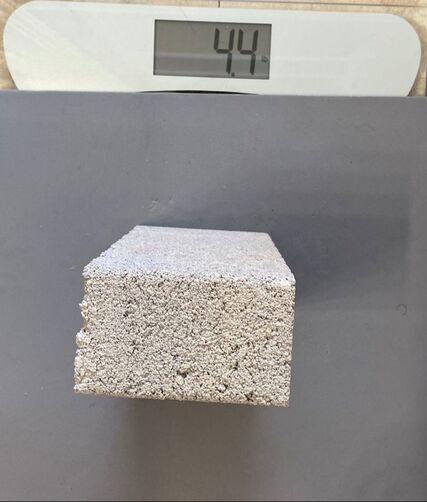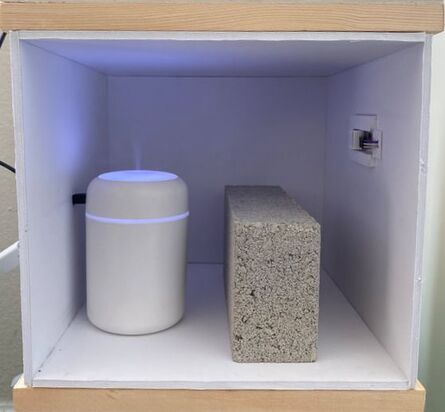Methodology
Box condition : 70% Dew-point
The design condition of the environment chamber is based on the highest recorded dew-point in New York city 2021.
Preconditioning
To test the moisture absorption capacity of hygroscopic materials, pre existing moisture within the materials must be removed.
Wood
To precondition the wood sample it was placed in an oven. The oven was set to preheat and once it was preheated the wood samples were placed in the oven on dehydrating trays for a few hours.
Clay Brick & Concrete brick
The brick was preconditioned in the oven on dehydrating trays for 3 hrs.
Soil
Soil was sun-dried for 48 hours and then placed in a microwave for 1 minute.
The design condition of the environment chamber is based on the highest recorded dew-point in New York city 2021.
Preconditioning
To test the moisture absorption capacity of hygroscopic materials, pre existing moisture within the materials must be removed.
Wood
To precondition the wood sample it was placed in an oven. The oven was set to preheat and once it was preheated the wood samples were placed in the oven on dehydrating trays for a few hours.
Clay Brick & Concrete brick
The brick was preconditioned in the oven on dehydrating trays for 3 hrs.
Soil
Soil was sun-dried for 48 hours and then placed in a microwave for 1 minute.
Process for each material
1.Measure materials after preconditioning. This will be repeated after the experiment is over to determine whether or not the materials physical property has changed.
2.Place material inside environment box and turn on humidifier.
3.Seal box and turn humidifier on until the Dew-point reaches 70%. This will be the base value that will be used to compare absorption capacity between the varying materials.
4. After the environment reaches 70%, allow it to run for the remainder of the allotted time.
5. Repeat
1.Measure materials after preconditioning. This will be repeated after the experiment is over to determine whether or not the materials physical property has changed.
2.Place material inside environment box and turn on humidifier.
3.Seal box and turn humidifier on until the Dew-point reaches 70%. This will be the base value that will be used to compare absorption capacity between the varying materials.
4. After the environment reaches 70%, allow it to run for the remainder of the allotted time.
5. Repeat

